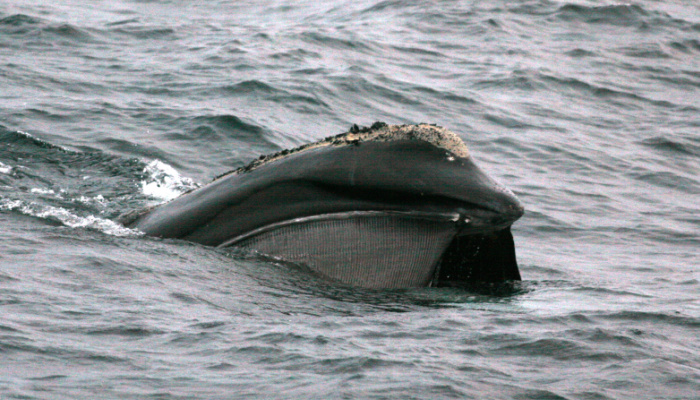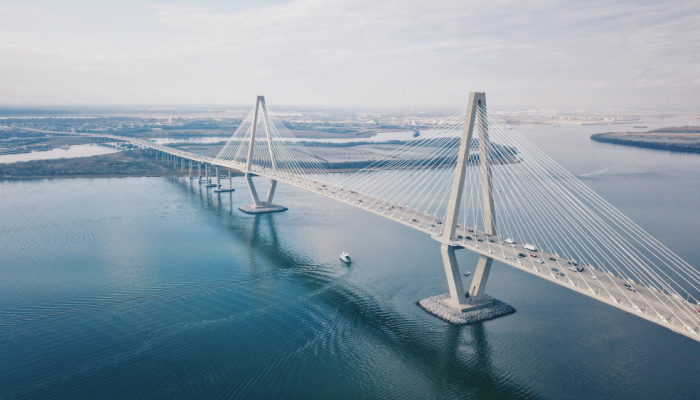No one’s telling tales of their immense size (like the blue whale), their captivating beauty (like the orca), their vibrant personality (like the dolphin) or even their eloquent song (like the humpback). They haven’t been widely referenced in pop culture, and they aren’t always top of mind when talking about the ocean. In a time where they might be easily overlooked, the critically endangered North Atlantic right whale needs their story told. With only 340 or so remaining, they face the very real risk of extinction… but the actions we take as individuals can be the turning point for their future.
Who’s Who
Right whales are robust, slow-moving cetaceans that can grow to more than 50 feet and frequent the waters along the east coast of the United States and Canada. They are dark charcoal to black in color and their heads are mottled with large, rough patches of white called callosities.
As baleen whales, their mouths lack teeth but instead are filled with fibrous keratin resembling brush bristles that allow them to trap their prey. Their callosities form unique patterns that enable scientists to individually recognize and track them from afar. Unfortunately, distinctive scarring caused by human impact is another telling characteristic in deciphering who’s who.
 A close-up look at a right whale's baleen and callosities
A close-up look at a right whale's baleen and callositiesRight Whales, Wrong Places
Right whales have always been a species at risk; their given name alone alludes to this. Back in the days of whale hunting, they were considered the “right” whale to hunt due to their thick layer of blubber causing their bodies to stay afloat after they were killed. Now, they’re still facing human-induced threats to their survival, albeit in different forms:
Entanglement – Immeasurable amounts of active and discarded fishing gear (known as ghost gear) floats within the waves that can tangle, twist and trap right whales as they’re traveling up and down the coast.
Climate Change – When prey shift their whereabouts due to warming waters caused by climate change, right whales follow, leading them into unprotected waters lacking regulations or looming with loftier obstacles.
Vessel Strikes – As a widespread shipping route and recreational reprieve, the ocean is increasingly occupied with fast-moving ships and boats that right whales run the (sometimes fatal) risk of colliding with.
As is true with any wild animal, the less interaction these whales have with humans — whether directly or indirectly — the better.
Social Distancing at Sea
One way to help safeguard right whales is to remain 500 yards away if you’re lucky enough to spot them, a requirement especially important if you’re in a vessel yourself.
Since identifying distance while on the water can be difficult, consider the following to help make the call:
500 yards — or 1,500 feet — is the rough equivalent of 1 ½ cruise ships, 42 school buses, or the distance between the two towers of the Ravenel Bridge in downtown Charleston.
 The Ravenel Bridge
The Ravenel BridgeEnsuring Their Story Doesn’t End
How can we help, when the scenario seems too dire to make a difference?
Just as the ocean is made up of individual drops and stories are made up of individual words, our collective actions can craft their next chapter. After all, any ending in the right whale’s story is the wrong ending.
Follow the facts – As scientists release new research and data, rulings and regulations can change. Stay up to date by following credible sources and seeking out new information.
Whale watch the right way – Adopt safe boating practices, slow down if you see whales, keep your distance and don’t linger!
Share their story – There is power in promoting what you care about! Awareness creates advocates and leads to action that can become the catalyst for change.
Subscribe to our emails for ways to take action, learn and protect what you love.
Published March 8, 2023


